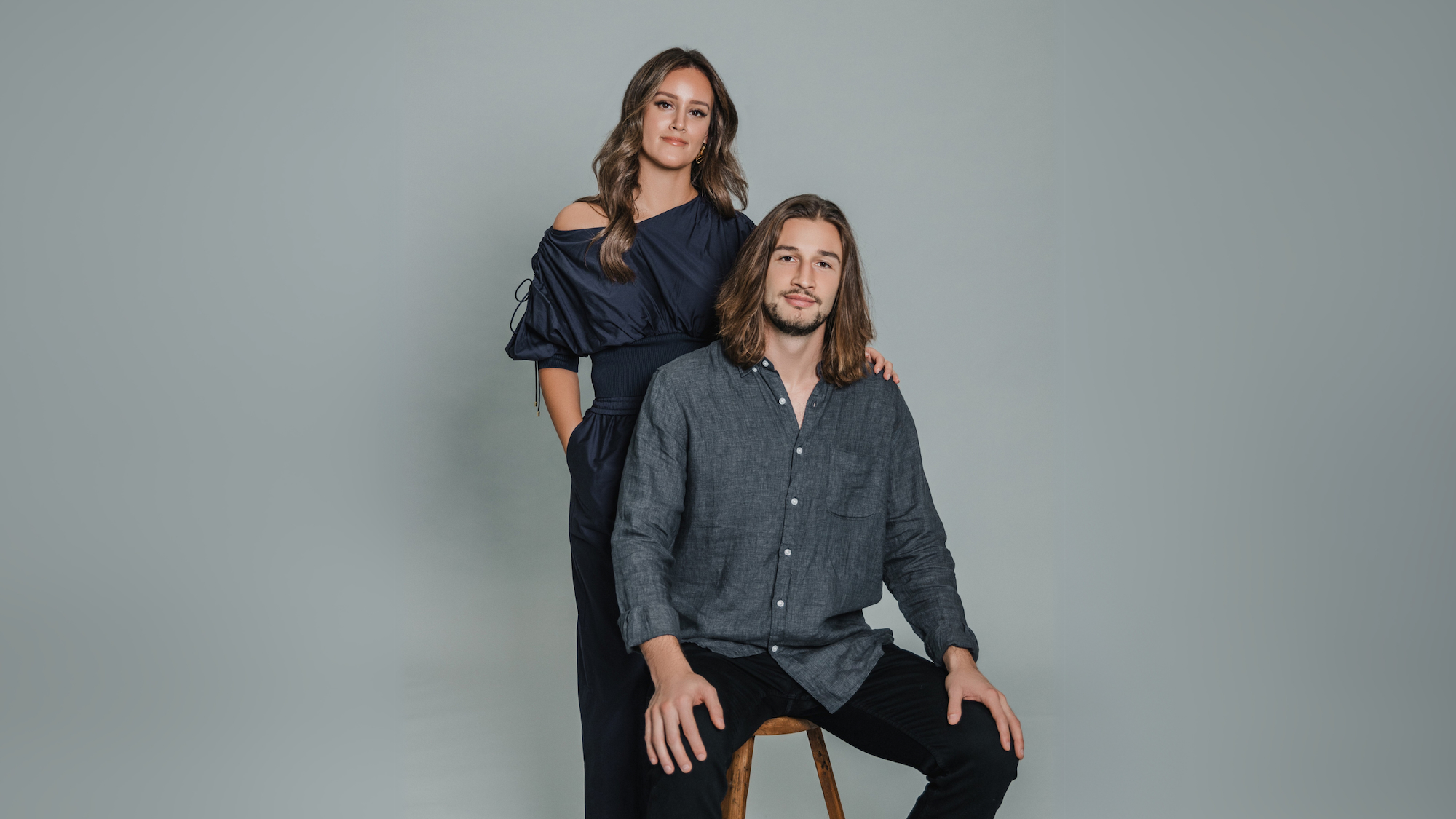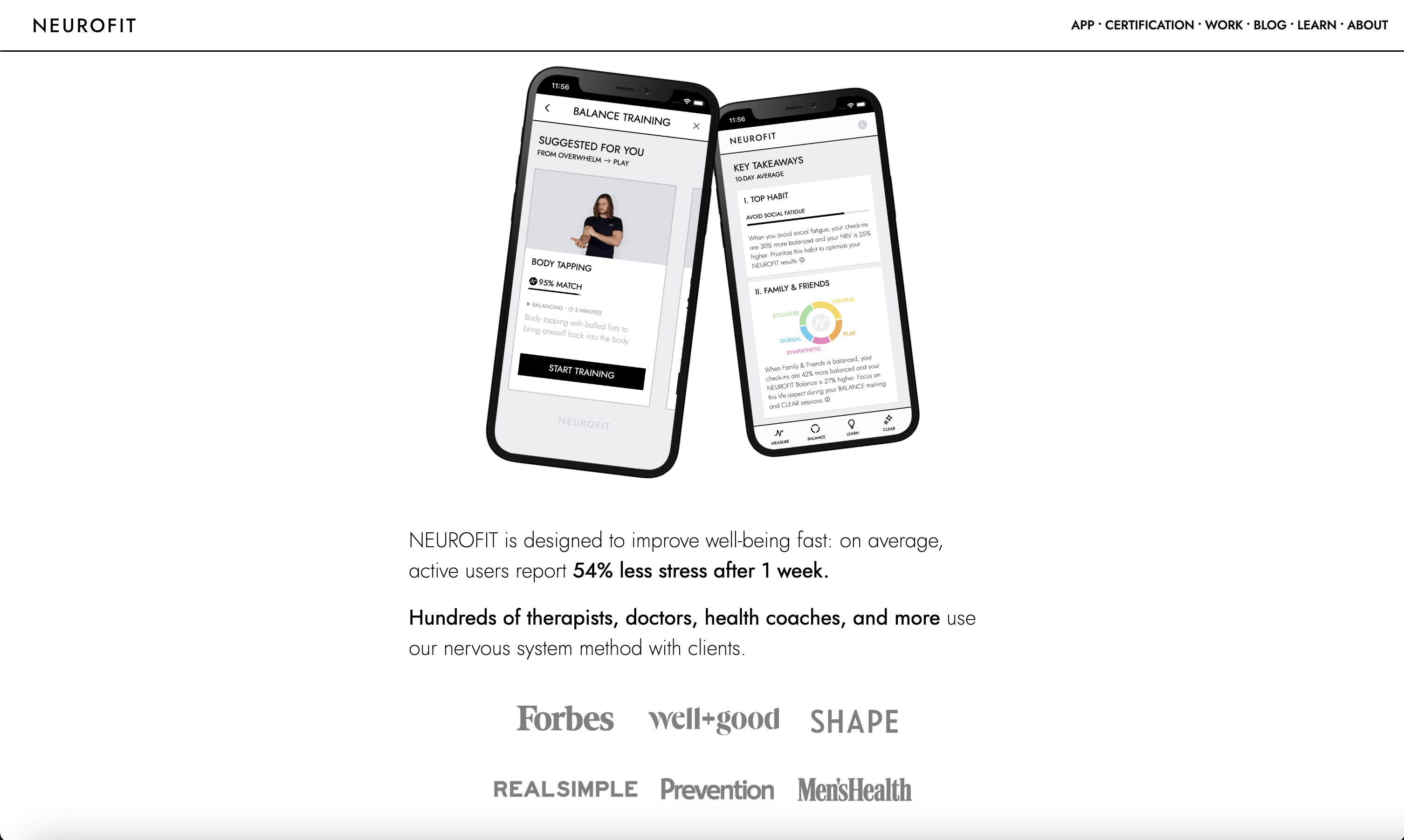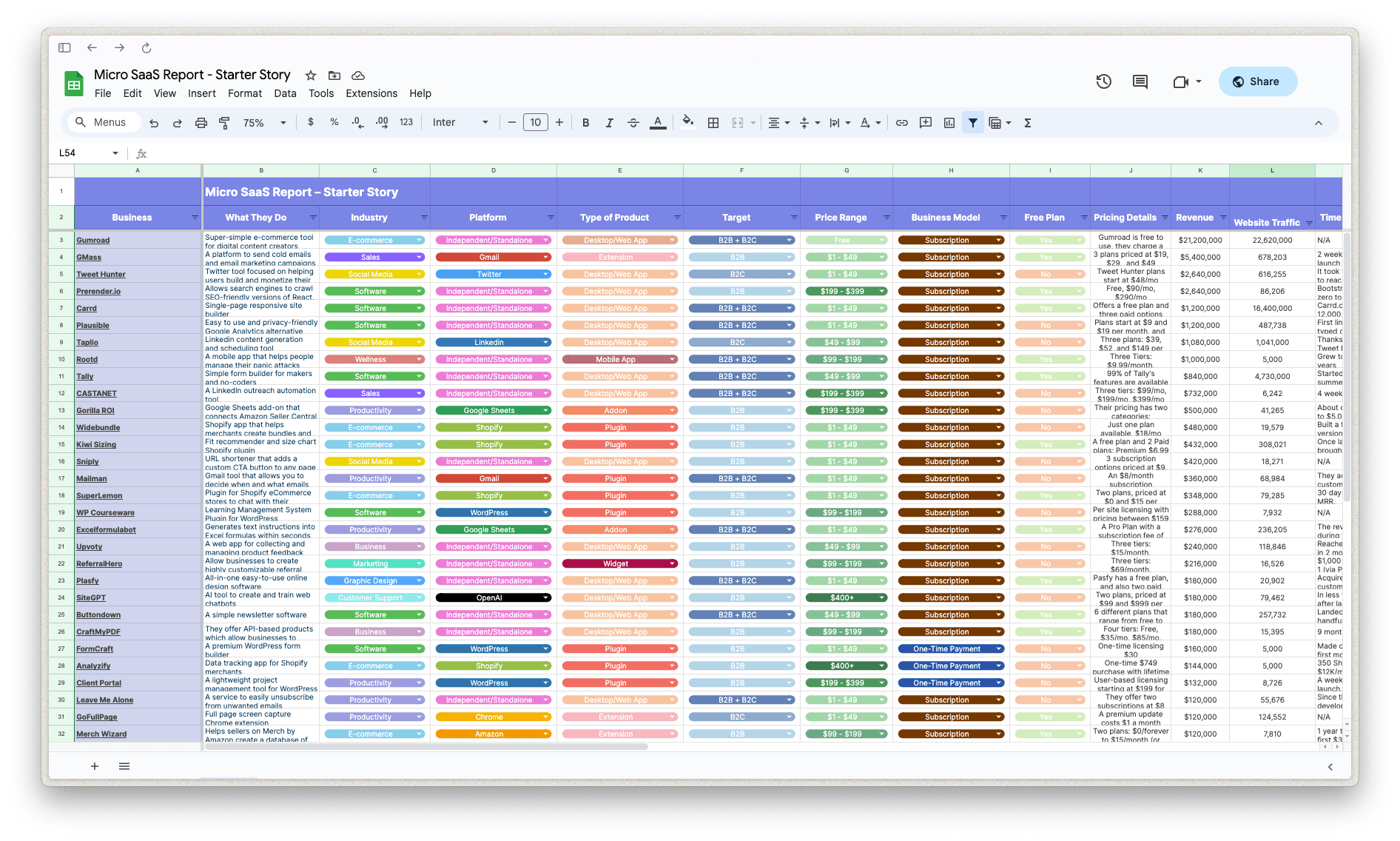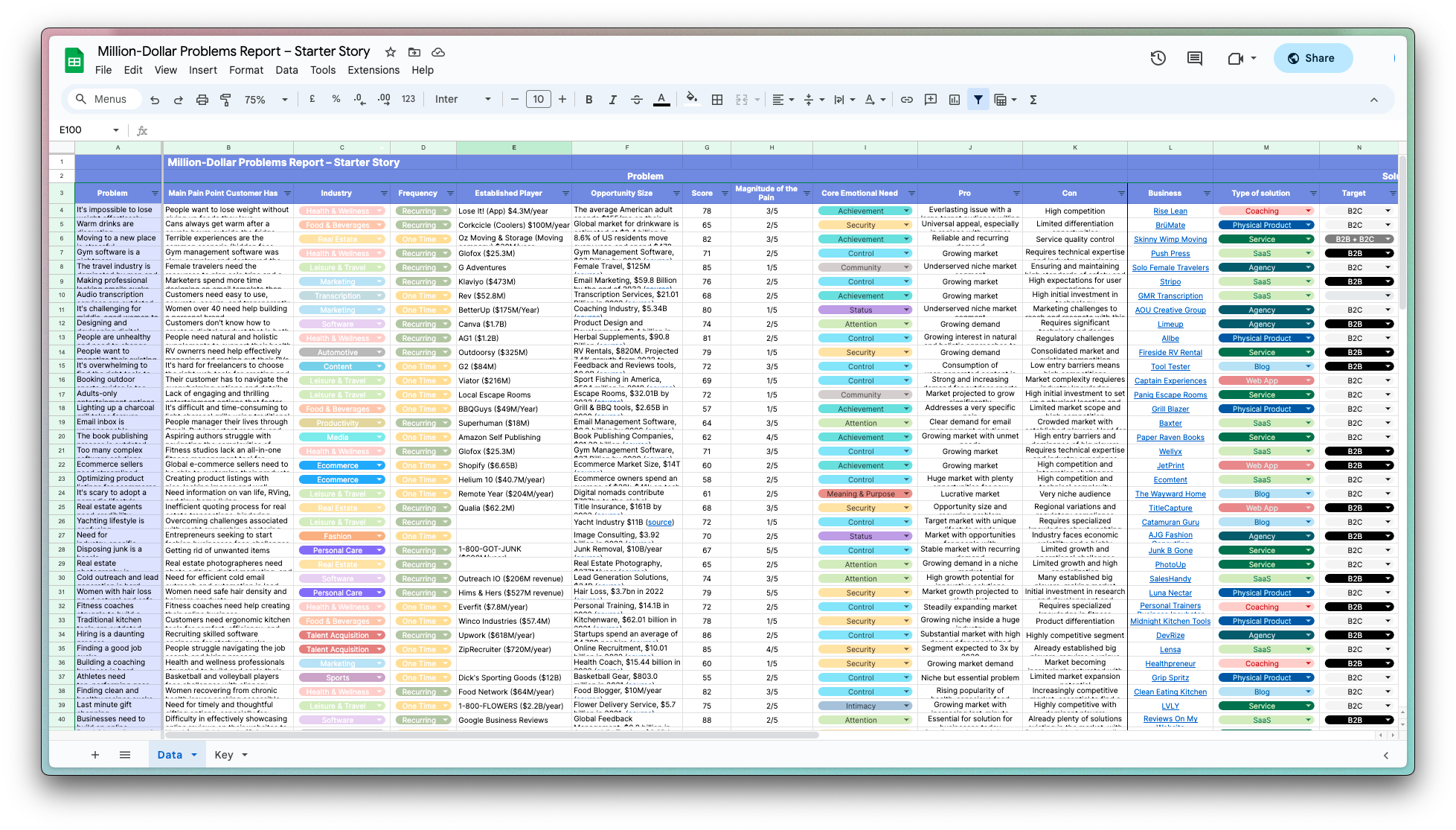How We Turned Personal Burnout Into A $70K/Month Wellness App
Who are you and what business did you start?
I'm Andrew Hogue - my wife Loren and I are Co-CEOs of NEUROFIT. After experiencing Complex PTSD and burnout as a 3x tech founder, I combined my Caltech CS background with recent neuroscience literature to build a data-driven solution for stress management. The NEUROFIT App helps busy professionals prevent burnout through quick, science-backed exercises that reduce stress - by 54% in one week, for our average active user.
What makes us unique is our focus on measuring and regulating the nervous system without any wearables needed. Our users include high-performance professionals in tech, finance, and healthcare who need evidence-based solutions that fit into their busy schedules. To date, we've helped 60,000+ users across 100+ countries and trained 500+ health professionals in our methodology, and we currently bring in around $70K/month.

My image

How do you come up with the idea for NEUROFIT?
For Loren and I, the "aha" moment came from both my journey with Complex PTSD, and our mutual experiences with severe burnout - as co-founders, we set out to solve our own problem first, so we knew the problem was real.
Growing up in a highly neurodiverse home around autism, bipolar disorder, and anxiety, I naturally developed a strong interest in how technology could better support mental health at scale. But it was my own lived experience that showed me the gap in existing solutions - most of them focus on the mind, when burnout is a physiological issue - so the real solution lies in the nervous system.
Through my work at companies like Snapchat and Headspace, I saw how traditional wellness approaches often fell short because they didn't address the physiological aspects of stress. After I learned that 80% of our nervous system carries information from body to brain (not the other way around), and through Loren's years of work as an applied somatics coach, we realized we could use technology to help people measure and regulate their stress response directly.
We validated this approach by analyzing millions of stress-related datapoints and working with Loren's health professional community early on to refine our methodology. The data was clear: when people could measure their stress levels, know what was contributing to it, and access quick, targeted exercises and coaching to shut off their body's stress response when needed, they showed clear improvement in both subjective wellbeing, as well as physiological metrics like heart rate variability.
How did you build the initial version of NEUROFIT?
We started by building out a digital coaching app that would help you measure and balance your nervous system. Initial costs were bootstrapped out of pocket, with savings, credit cards, and a family+friends round - we were able to stay lean with development, as Loren and I designed the product ourselves, and I coded it end-to-end - mostly while we were living out of hotels:
Disclaimer: The initial draft of this article was compiled by the Starter Story team based on publicly available interviews, podcasts, and other content from the founder.

Download the report and join our email newsletter packed with business ideas and money-making opportunities, backed by real-life case studies.

Download the report and join our email newsletter packed with business ideas and money-making opportunities, backed by real-life case studies.

Download the report and join our email newsletter packed with business ideas and money-making opportunities, backed by real-life case studies.

Download the report and join our email newsletter packed with business ideas and money-making opportunities, backed by real-life case studies.

Download the report and join our email newsletter packed with business ideas and money-making opportunities, backed by real-life case studies.

Download the report and join our email newsletter packed with business ideas and money-making opportunities, backed by real-life case studies.

Download the report and join our email newsletter packed with business ideas and money-making opportunities, backed by real-life case studies.

Download the report and join our email newsletter packed with business ideas and money-making opportunities, backed by real-life case studies.












